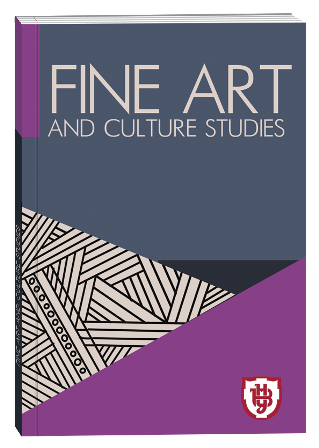SPECIFICITIES OF THE DEVELOPMENT OF INSTRUMENTAL PERFORMANCE IN CHINA IN THE FIRST QUARTER OF THE 21ST CENTURY
DOI:
https://doi.org/10.32782/facs-2025-2-11Keywords:
musical art, China, folk instrumental performance, musical genres, performers, style, repertoire, instrumental groupsAbstract
The purpose of the work is to reveal the specifics of the development and functioning of instrumental performance in the present period.The article examines the main trends and features of the development of Chinese instrumental performance in the first quarter of the 21st century. The influence of globalization, digital technologies, China's cultural policy, as well as the integration of traditional and modern forms of music making are determined. Changes in the system of musical education and the institutional formation of artistic groups are analyzed.The research methodology is based on a comprehensive approach that combines the observation method and art historical analysis (consideration of the specifics of the development of traditional Chinese folk music, various genres, directions, and styles). The information approach made it possible to consider the dynamics of development over the past decades. The use of the analytical method made it possible to clarify the trends in the development of Chinese musical culture and art. In order to systematically and purposefully perceive the selected topic, the article uses the observation method.The scientific novelty lies in the attempt to take a comprehensive approach to highlighting the specifics of Chinese instrumental music, genres, and styles. The article states that the diversity of musical genres is the result of the development of traditional Chinese music, which not only continues traditional music but also demonstrates development and innovation.It has been proven that modern instrumental art in China is associated with the influence of Western culture, the Chinese school of composition, and the development of new genres and styles.China's contemporary musical culture is dynamic and diverse, combining traditional elements with contemporary artistic trends.
References
Сонг Джин. Музичні естетичні підходи: розваги інших – слухання, саморозваги – гра та саморефлексія – практика. Музичне мистецтво (журнал Шанхайської музичної консерваторії), № 1, 2018. С. 29−38.
Сяо Мей. Традиція та сучасна інтерпретація національної інструментальної музики. Китайське музикознавство, № 2, 2020, С.74−91.
Хуан Сянпен, Про збереження та розвиток китайської традиційної музики. Китайське музикознавство, № 4, 1987. C. 13−14.
Чжан Бою. Про втрату традиційного музичного мислення в розвитку сучасної китайської національної інструментальної музики. Народна музика, № 1, 2009. С. 60−61.
Чжу Сиси. Еволюція китайської інструментальної школи: історико музикознавчий аспект. Слобожанські мистецькі студії, 2024. Вип. 1 (04). С. 146−149. URL: https://journals.spu.sumy.ua/index.php/art/article/view/242







